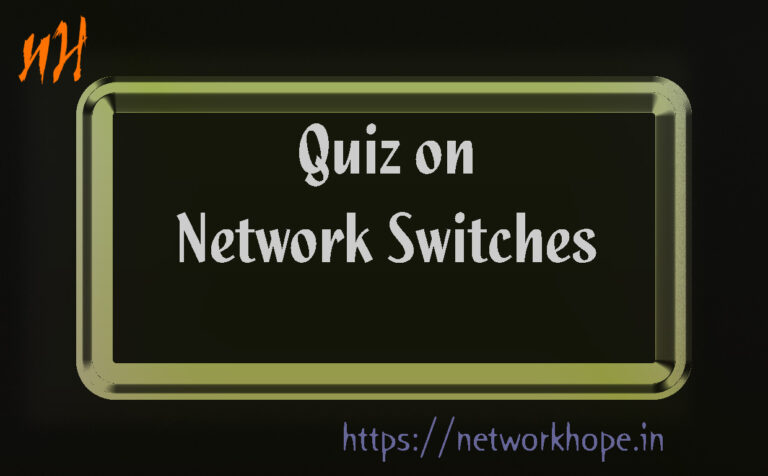Network Hope Quiz: Quiz on Network Switches Part-2
Welcome to the Quiz page of the Network Hope. This page contains a Quiz on Network Switches Part-2. This chapter covers the concept of switching in layer-2 with well illustrative diagrams. You may go through the chapter Types and function of Switches before appearing in this quiz.
Each Question has 4 options. Choose the Most appropriate one.
Category : Easy
Please leave a message if you have any unresolved queries, and also let me know if you liked the quiz.
Chapter:Types and functions of the Network Switch
Click on the correct answer for each question.
No negative marking and no time limit.
At the end check the score and correct your answer.
-
1. Which of the following method ensures the complete drop of erroneous frames?
A) Cut-through
B) Store-and-forward
C) fragment free
D) All of the above
-
2. The first _____ octets of the MAC address is known as OUI.
A) 5
B) 4
C) 3
D) 2
-
3. The replication of traffic through a switch to a specific port is known as _______
A) Port replication
B) Port copying
C) Port mirroring
D) All of above
-
4. Which of the following functions is generally not performed by a L3 switch?
A) MAC address filter
B) Port mirroring
C) IP routing
D) NATting
-
5. Which of the following protocol is used to create redundant paths without creating loops?
A) SNMP
B) STP
C) SMTP
D) SGMP
-
6. In which of the following switch, you can expand the functionality of a switch?
A) Fixed
B) Modular
C) Smart
D) Unmanaged
-
7. Those switches are ideal for implementation as edge switches in a large organization network.
A) managed L3 switch
B) managed L2 switch
C)Smart Switch
D) Unmanaged Switch
-
8. To limit the access from a switch-port to a specific, or a group of MAC addresses is done by _______
A) Port teaming
B) QoS
C) Port mirroring
D) Port Binding
-
9. A switch ready to use and ideal for a small office or home network.
A) Umnanaged
B) Modular
C) Smart
D) Manage L3
-
10. Which of the feature is used to prioritize traffic of a specific link
A) Port Mirroring
B) QoS
C) Port Binding
D)Port aggregation


